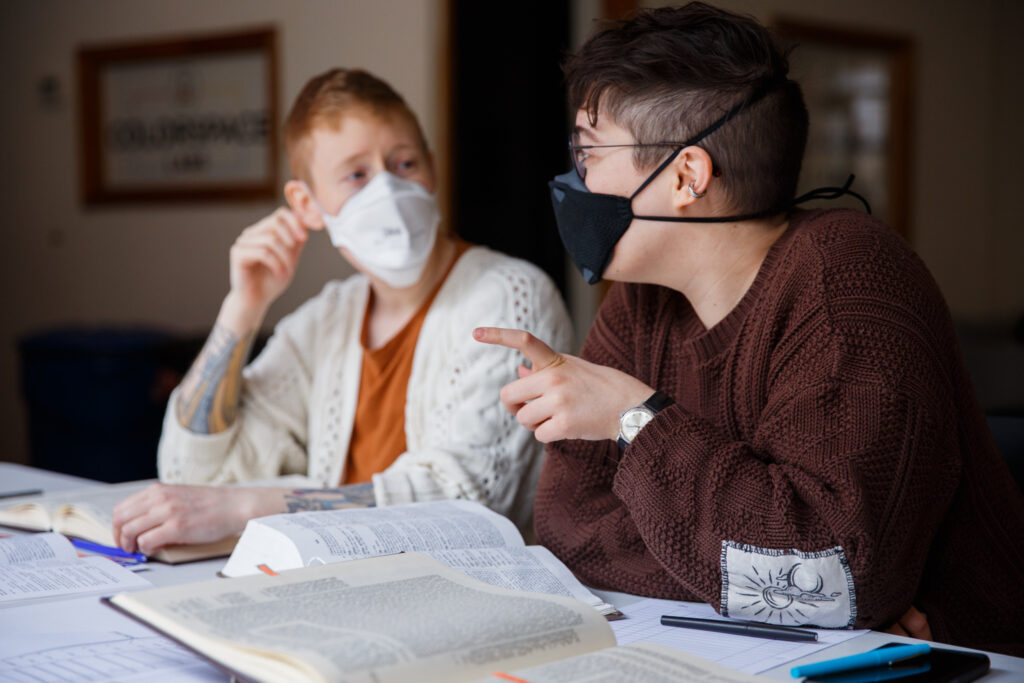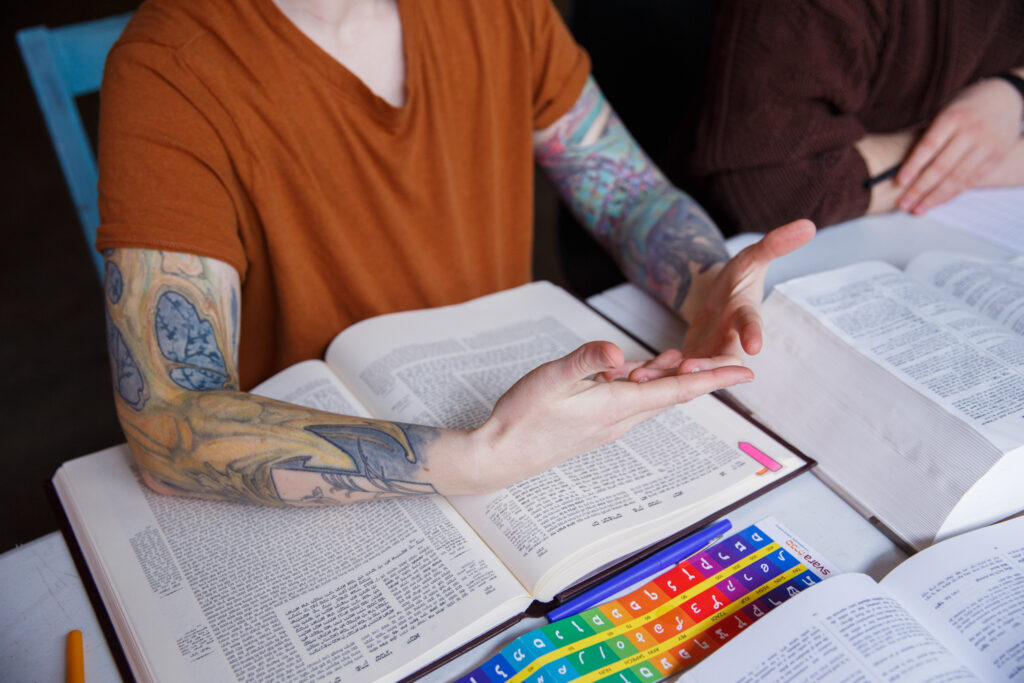“Welcome to mitzvah-land.” I first heard this phrase in 2017, standing in the back of the bet midrash at Queer Talmud Camp with my brand-new fairy wings shimmering behind me. After witnessing a potent, revelatory round of dedications—which, of course, left my throat thick and my eyes watery—we blessed our learning, and a smile erupted on Benay’s face as she stood at the shtender in the front of the room and proclaimed: “Welcome to mitzvah-land!” The room clapped and giggled. Something happened, and when Benay said those three words I really felt like we were in a different place than before we had blessed and opened our masechtot on the long, paper-covered tables in the bet midrash. I was somewhere new.
There’s delicious silliness that I feel whenever I say these words now after blessing our learning. They signal to me that learning takes us somewhere, an idea that resonates with my education which heavily featured Wishbone—the stunningly literate dog—who traveled into the worlds of storybooks, taking on the lives and identities of famous protagonists. But what happens to me when I learn Talmud is different from the magic that happens when I’m transported to new worlds when I read.
When I’m deep in a sugya I don’t feel like I’m suddenly in a new place, able to experience the world of Pumbedita in the sixth century. I am transported to somewhere, but it’s not the historical, literary, or mythic world of the Rabbis.
I’m in Talmud. Not the world that shaped the Talmud, not the yeshivot of the Sassanian Empire or Roman-occupied Palestine, not the bet midrash of Yavneh…but Talmud itself. After all, the Rabbis teach, “exile yourself to a place of Torah” (Avot 4:14), recognizing that our tradition is a makom, a place and space where we can actually go.
In A Traveling Homeland: The Babylonian Talmud as Diaspora, Daniel Boyarin writes that the Talmud “is itself a diaspora, a transcultural space.” In the wake of the CRASH of the Second Temple that brought into being the decentralized, mobile, diasporic world of rabbinic Judaism, Talmud became the homeland of the Jewish people.
At first, Talmud enabled the rabbis to make home in Babylon, creating new forms of Jewish practice and expression that made Torah and mitzvot portable. One of my favorite sugyot that I’ve learned with y’all outlines this transformation:
וּמִנַּיִן שֶׁאֲפִילּוּ אֶחָד שֶׁיּוֹשֵׁב וְעוֹסֵק בַּתּוֹרָה שֶׁשְּׁכִינָה עִמּוֹ
שֶׁנֶּאֱמַר: ״בְּכָל הַמָּקוֹם אֲשֶׁר אַזְכִּיר אֶת שְׁמִי אָבוֹא אֵלֶיךָ וּבֵרַכְתִּיךָ״
And from where is it derived that when even one who sits and engages in Torah study, the Shekhina is with them? As it is written (Exodus 20:21): “In every place where I cause My Name to be mentioned, I will come to you and bless you.”
In each and every place that we learn Torah, G!d’s presence is with us. The verse quoted here from Exodus 20:21 is—no surprise—not about learning Torah at all, but is about setting up sacrificial altars in particular places along the journey from Mitzrayim to Eretz Yisrael. Here the Rabbis show us how they reinterpreted their inherited place-based tradition, embodied in verses from the Torah, into a portable, mobile, set of practices that enabled them to learn G!d into existence wherever they were. The Talmud gave us the ability to be at home anywhere.
But eventually, Talmud became more than just a tool for helping us be at home in Bavel. The Talmud itself became our—and G!d’s—home. As Boyarin teaches:
The Babylonian Talmud replaces Babylon, which has replaced Palestine as the homeland, the ties that bind this diaspora together are synchronic, their common culture of the study of this book and the language, modes of thought, and practice that come with it.
It is not simply that Talmud—as a product and tool of diaspora—enables us to make our home anywhere. Instead, in Boyarin’s view, wherever we are, we are at home in Talmud. As we learn, as we participate in the culture of creating and embodying Talmud, we come home to it.
At SVARA, we are all shapers of tradition, creators of our own makom, and travelers together to mitzvah-land. Mitzvah-land is the hole in the space/time continuum that we create through our learning, the home that we make for G!d that creates the space for G!d to enter. We are all welcome. We are home.







